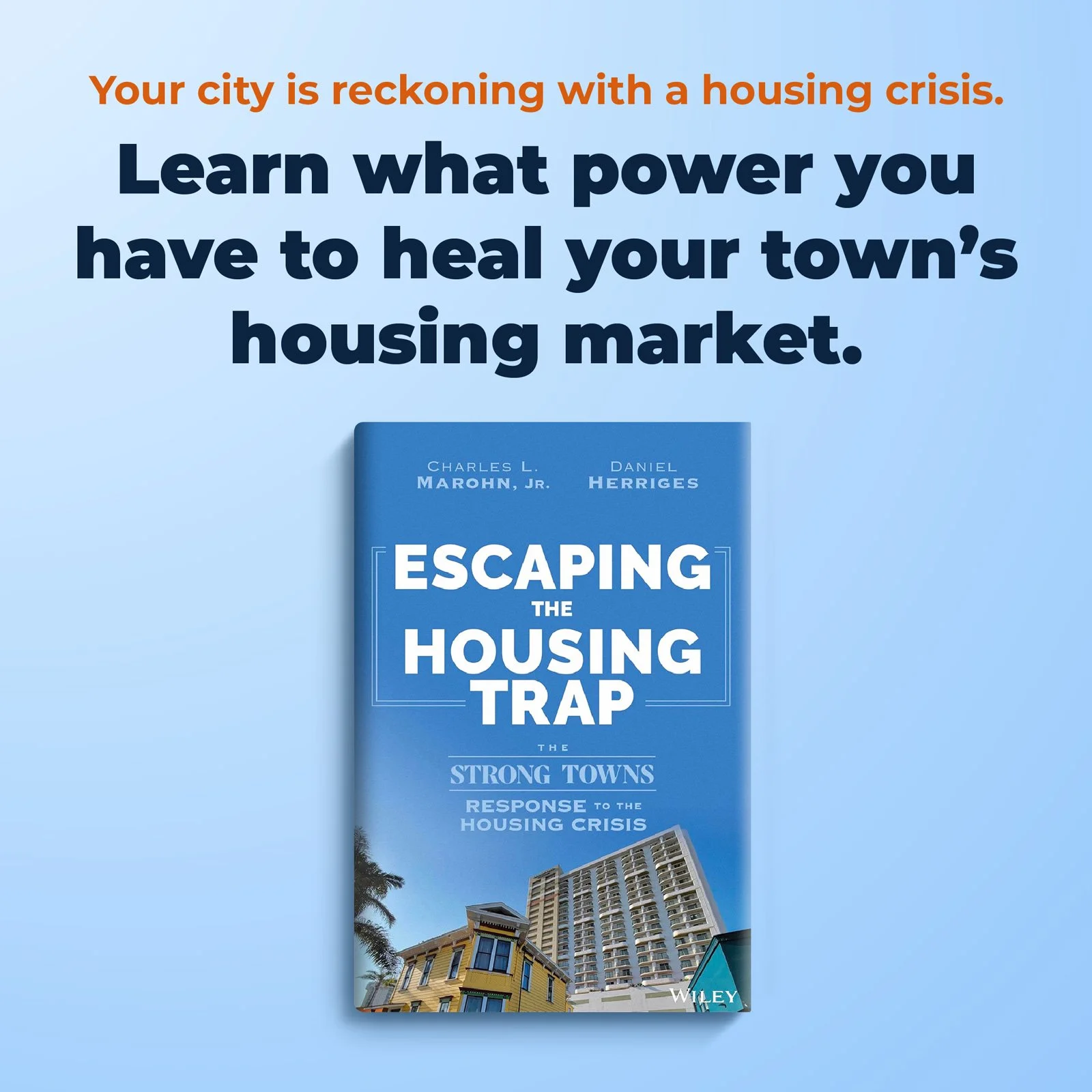If We Made Shoes Like We Make Housing, People Would Go Barefoot
This article is an excerpt from our upcoming book, Escaping the Housing Trap: The Strong Towns Response to the Housing Crisis, written by Charles Marohn and Daniel Herriges. Pre-order your copy today!
(Source: Unsplash/Blake Wheeler/Domino.)
Almost everyone wears shoes. For all practical purposes, shoes are essential clothing for most humans alive today. Shoes come in seemingly as many varieties as there are feet. In fact, most Americans own multiple pairs. While some struggle to pay for shoes, there are many different price points and ways of acquiring them. Our economy produces shoes in such abundance that we never experience a shortage. There is no shoe crisis or shoeless problem.
Pretend for a moment that this isn’t the case. Imagine a shoe market that produces only two kinds of shoes: a high-end loafer and an elite-brand tennis shoe. The high-end loafers are produced by a few companies such as Gucci and Louis Vuitton. The elite-brand tennis shoes are produced by companies such as Nike and Adidas. They are named after famous sports figures.
A century ago, there was a shoe crisis. Shoes were abundant but very poor in quality. A financial crisis then caused people to lose their shoes, through no fault of their own. The federal government stepped in and provided insurance and subsidies to get the shoe market moving again. New shoes were produced in abundance. Prices were broadly affordable. Quality went up significantly.
Through a broad cultural consensus, two styles of shoe begin to dominate the market: high-end loafer and elite-brand tennis shoe. Federal subsidies are set up to promulgate these two choices. Local regulations are put in place to reinforce this preference. Everyone from large banks to local shoe salesmen find it lucrative to support the emergence of these two options.
In this imaginary world, anyone who wants shoes can still buy them. There is a market, and that market has multiple competitors. Yet those competitors are competing at only two price points. Both price points are rather expensive.
People who can’t afford shoes at high prices buy used shoes. New shoes filter down to be purchased by poorer people. Over time, the prices for new shoes climb. More and more people compete for the used shoes that are available. Now the price of used shoes climbs, as well.
The federal government steps in to assist people buying new shoes. They set up direct and indirect subsidies. They encourage banks to assist shoe manufacturers. Local governments, too, get in on the act and provide their own set of subsidies to shoe corporations. People can now pay more for their Gucci loafers and Air Jordans, so prices soar. So do profits.
Shoe corporations can sell both styles of shoes as fast as they can produce them, but there is a limit to how fast they can be produced. Local permitting restricts the number of shoes that can be made. Rising prices have bloated supply chains, making everything more expensive. The extensive web of public and private capital vested in producing high-end loafers and elite-brand tennis shoes stifles innovation.
Political factions arise that advocate for the production of more high-end loafers, with some fraction offered at subsidized prices. Opposing factions arise to object to these plans. A used and ratty pair of Air Jordans is selling for twice as much as a new pair cost a decade earlier.
Speculators now buy new Gucci loafers without any intention of wearing them. They simply want to capture the price appreciation. Shoe prices climb higher and higher. Lots of people who want shoes can’t get them. They go barefoot. Those who can buy shoes feel financially squeezed. Price increases are normalized, even expected. Many people are desperate to get any pair of shoes.
This all feels bizarre. What kind of mass insanity would have to occur for it to become normal that only two types of shoes were available for purchase, and those produced by only a handful of suppliers? In this imaginary world, how long would this go on until someone did the obvious thing and began producing penny loafers? At what point in this self-created shoe shortage would people simply start making their own shoes?
We have an abundance of shoes today, and so this entire scenario seems absurd. It is absurd. Yet our present housing crisis, which seems normal to us, would be absurd to anyone living a century ago. In the context of millennia of human development, we are the first culture to find ourselves with a chronic shortage of housing. We have grown used to something that is deeply abnormal.
In a little less than a century, housing has gone from being abundant but low quality to relatively good quality but now an elite product. We wiped out the starter rung on the ladder. We need a housing market that produces penny loafers again.
This article is an excerpt from our upcoming book, Escaping the Housing Trap: The Strong Towns Response to the Housing Crisis, written by Charles Marohn and Daniel Herriges. Pre-order your copy today!






Charles Marohn (known as “Chuck” to friends and colleagues) is the founder and president of Strong Towns and the bestselling author of “Escaping the Housing Trap: The Strong Towns Response to the Housing Crisis.” With decades of experience as a land use planner and civil engineer, Marohn is on a mission to help cities and towns become stronger and more prosperous. He spreads the Strong Towns message through in-person presentations, the Strong Towns Podcast, and his books and articles. In recognition of his efforts and impact, Planetizen named him one of the 15 Most Influential Urbanists of all time in 2017 and 2023.